Andromeda, also known as M31, is the nearest large galaxy to us. At "only" 2 million light-years away, it gives us the best chance to study another spiral galaxy besides our own. I get particularly impressed by the high resolution images we can get, since it's so close to us. Andromeda looks like this in visible light:
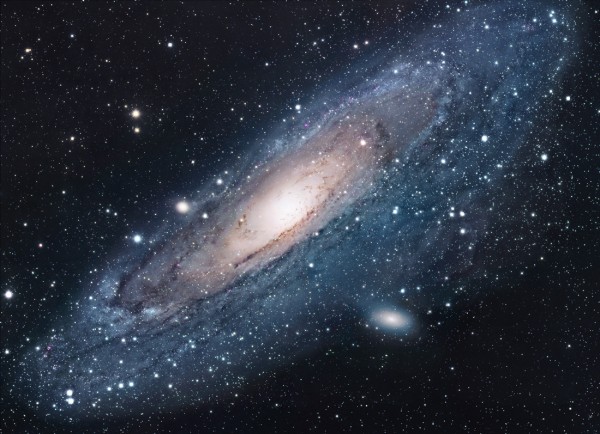
And it looks like this in the ultra-violet:

But recently, a few very, very high-resolution pictures were taken, woven together to create a mosaic, and released to the public. The Ultraviolet light one -- made by the Swift satellite -- just came out today, but I thought I'd show you both the UV ones and the visible light ones.
They say a picture is worth a thousand words, so I'll keep the words brief and the pictures plentiful as we zoom in. First, the UV:
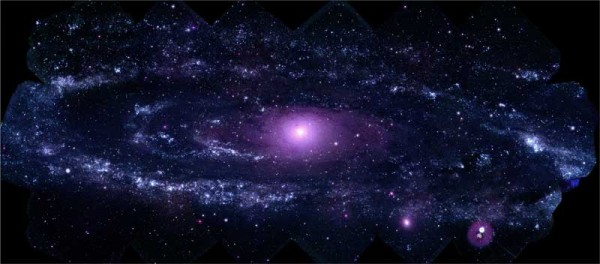
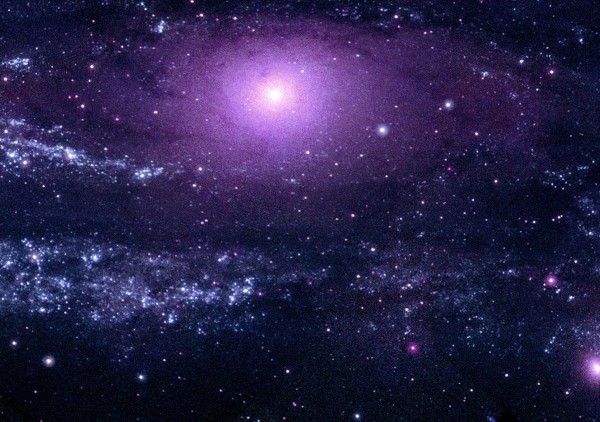
And now for the visible:
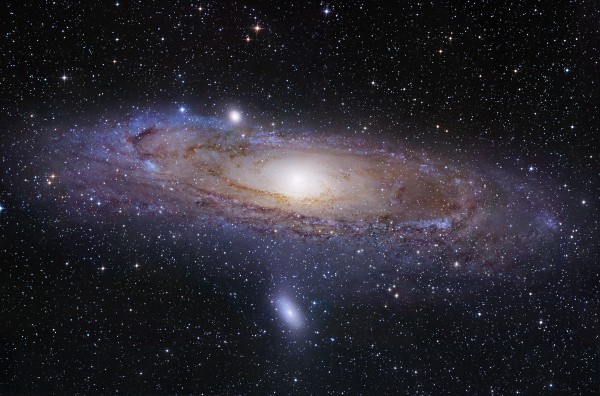
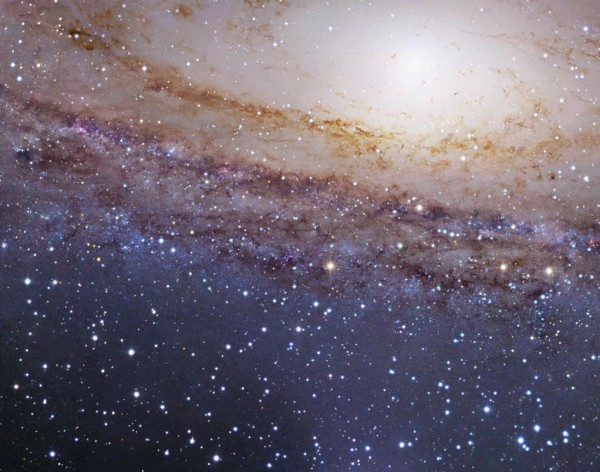
Somehow, I could stare at these for hours, especially the visible light image. Go here to download the ultra high-resolution images in UV and here for the visible light ones. And enjoy what is now my new desktop wallpaper!

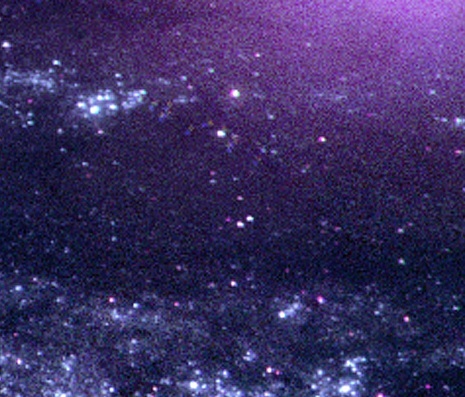
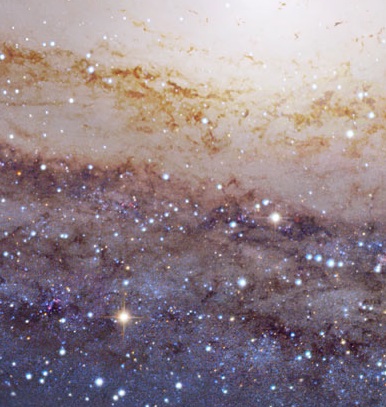
When you said '"only" 2 million light-years away' my first thought was that 2 million light years was a long way. But then I looked up the size of the Milky Way galaxy (on wiki) and it's 100,000 light years. So it's only 20 x the diameter of our galaxy away. That sounds pretty close.
By comparison the solar system has a diameter of about 100 AU and the nearest star is 4 light years away, which is about 2,500 x the diameter of the solar system.
Thanks for making one of my favorite Messier objects, the Andromeda Galaxy, even more beautiful to me. It's amazing even through good binoculars, but these photos- especially the ultraviolet one. Galaxies seem even more amazing when I've been looking at photos of the Deep Field, and several other super and hyperclusters of galaxies. This universe is so much bigger than I ever imagined.
I noticed that in the UV picture the galactic boundary is very well defined yet is very irregular. I assume it is an artifact of how the picture was produced. What is the cause?
I have always wonder if somebody in Andromeda is looking at the Milky Way in the same way we look at Andromeda. Or if Andromeda is just a gigantic pile of lifeless rocks. Or the life forms are so different from us that we can't conceive the way they look at the universe. Any way, it is a wondefull view. Thank you.
Are all the other stars (not obviously part of M31) in our galaxy?
All we need now is an image showing the distribution of dark matter in M31. Which of our currently operational telescopes, satellites, and technologies could map the dark matter distribution within and around the Andromeda Galaxy? Wouldn't such an image be extremely useful in understanding the interaction between dark matter and ordinary matter?
so, are the well resolved stars in the picture in our own galaxy? Are any of the stars visible in the picture actually in the m31 galaxy? Always been curious about that.
I don't want to freak anybody out, but it looks like it's headed this way.
Hey Tom... check these links out. Current data suggest that there will be a collision between Andromeda and the Milky Way... in about 4 billion years.
http://www.youtube.com/watch?v=2WEI8WBJkKk
http://www.nasa.gov/mission_pages/hubble/science/milky-way-collide.html